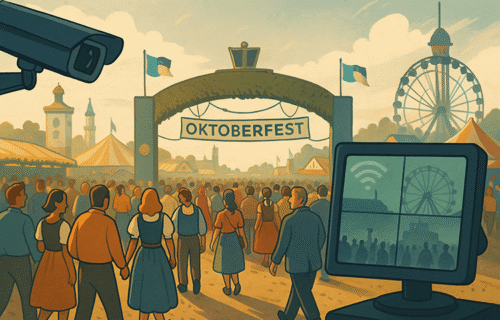The world’s largest beer festival faced an unexpected test this year when a bomb threat forced the temporary evacuation of Munich’s Oktoberfest on October 1. Though police later confirmed there was no ongoing danger, the brief shutdown caused an estimated €21 million in direct losses and exposed the broader economic and logistical vulnerabilities of Europe’s major public events.
Authorities cleared the Theresienwiese festival grounds after a letter suggesting an explosive threat was discovered near the site of a fatal fire in the Starnberg district. Investigators later found an explosive device and identified a local man who was subsequently found dead, suggesting an isolated act rather than an organised attack. Still, the disruption was immediate. Tens of thousands of visitors were ordered to leave, food and drink stalls halted service, and entertainment venues shut their doors for the day.
For Munich’s economy, even a single-day closure was costly. Oktoberfest typically draws around six million visitors each year, contributing more than €1.3 billion in economic activity. Breweries, caterers, and local hotels rely heavily on the event’s steady flow of guests, and many reported sharp losses following the suspension. While the festival resumed later that evening, the incident has left organisers, insurers, and city authorities rethinking how to manage risk in an era when both physical and psychological safety drive visitor confidence.
Security experts have praised Munich’s quick response, noting that the evacuation procedures worked as intended and that communication with the public remained clear. Yet the scare reignited memories of the 1980 Oktoberfest bombing — Germany’s worst post-war terror attack — and renewed discussion about how much insurance and crisis management have evolved since.
Event organisers across Europe are now watching Munich’s experience closely. Insurers have already begun reassessing policies for large-scale gatherings, with particular attention to how security-related interruptions are classified. Industry analysts say that post-pandemic risk frameworks now require events to prove resilience against both operational and external shocks, from weather disruptions to potential security alerts. The challenge is that these protections come at a price, with premiums and compliance costs expected to rise.
Tourism officials worry that such pressures could extend far beyond Bavaria. Large-scale celebrations such as Spain’s San Fermín Festival, Italy’s Venice Carnival, or France’s Cannes events depend on consistent visitor turnout and a sense of public safety. Even short-lived disturbances, analysts note, can ripple through the travel ecosystem, influencing bookings, media coverage, and investor confidence in the leisure economy.
Still, the swift reopening of Oktoberfest showed that resilience remains a defining strength of the festival tradition. Crowds returned in large numbers the following day, and Munich officials emphasised that trust and preparedness—not fear—will guide future planning.
As Europe heads into another year of tightly scheduled cultural and sporting events, the Oktoberfest bomb scare serves as a warning and a lesson: in a global economy where perception shapes reality, protecting the spirit of celebration may now require as much investment as staging it.
